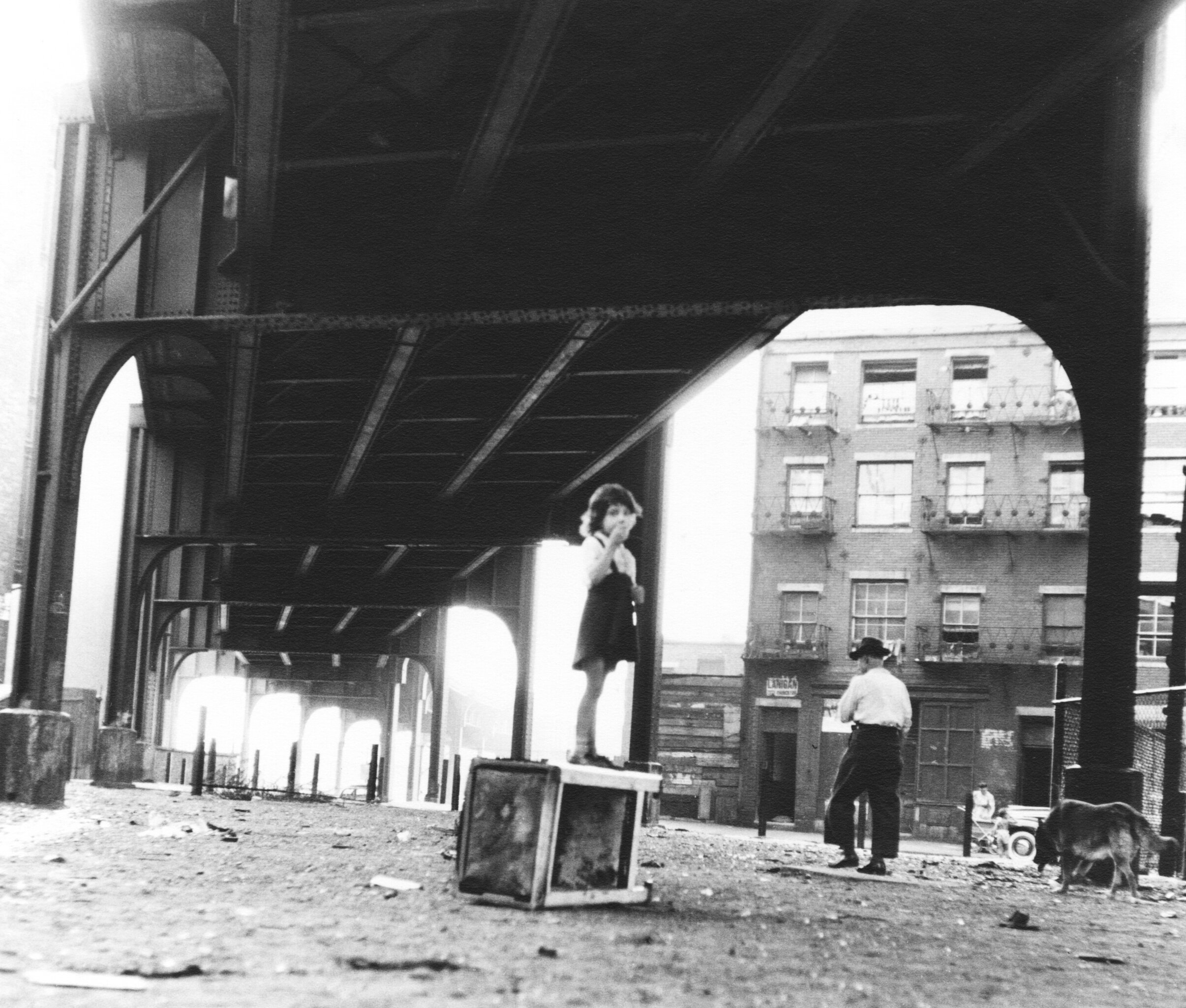
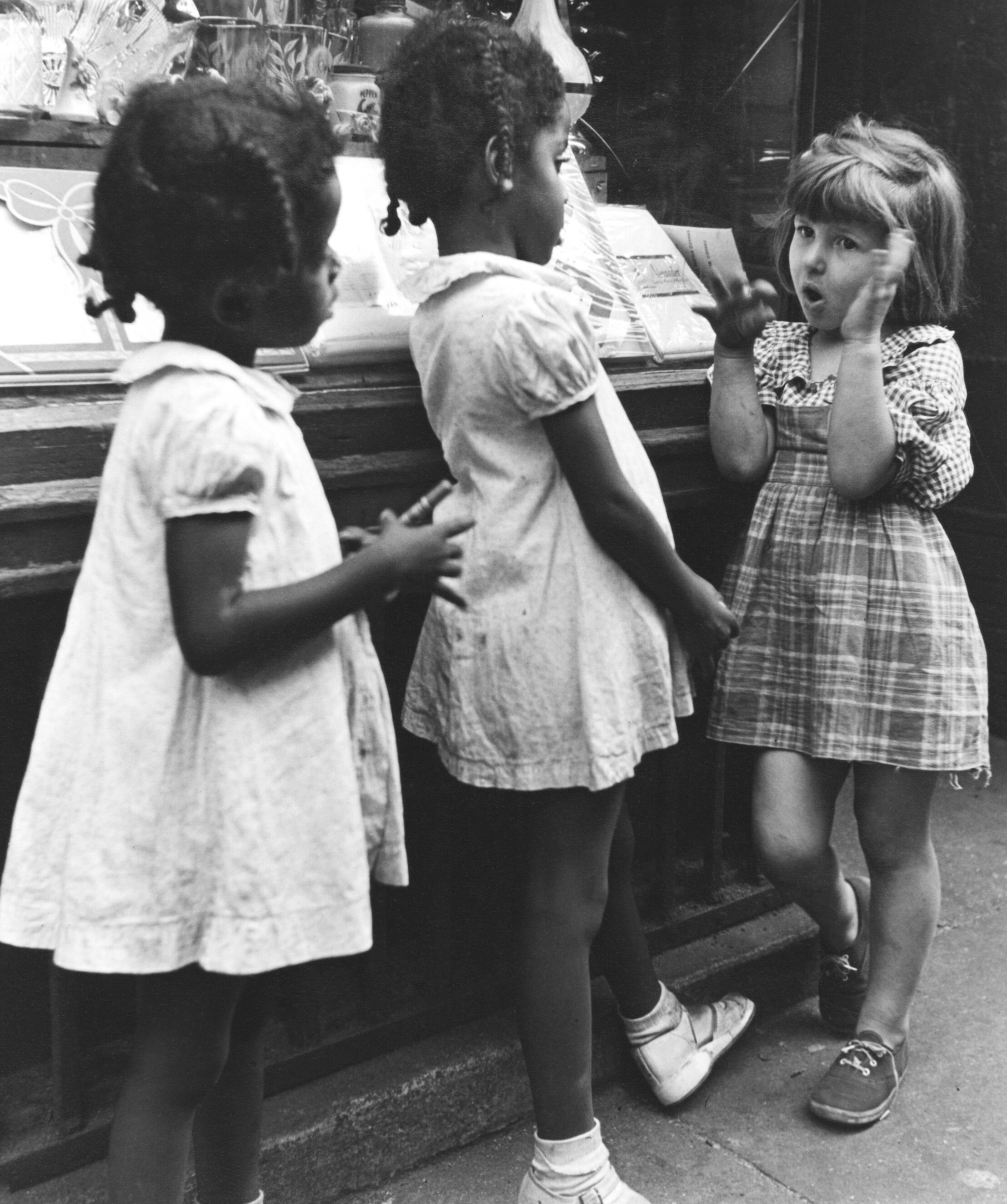
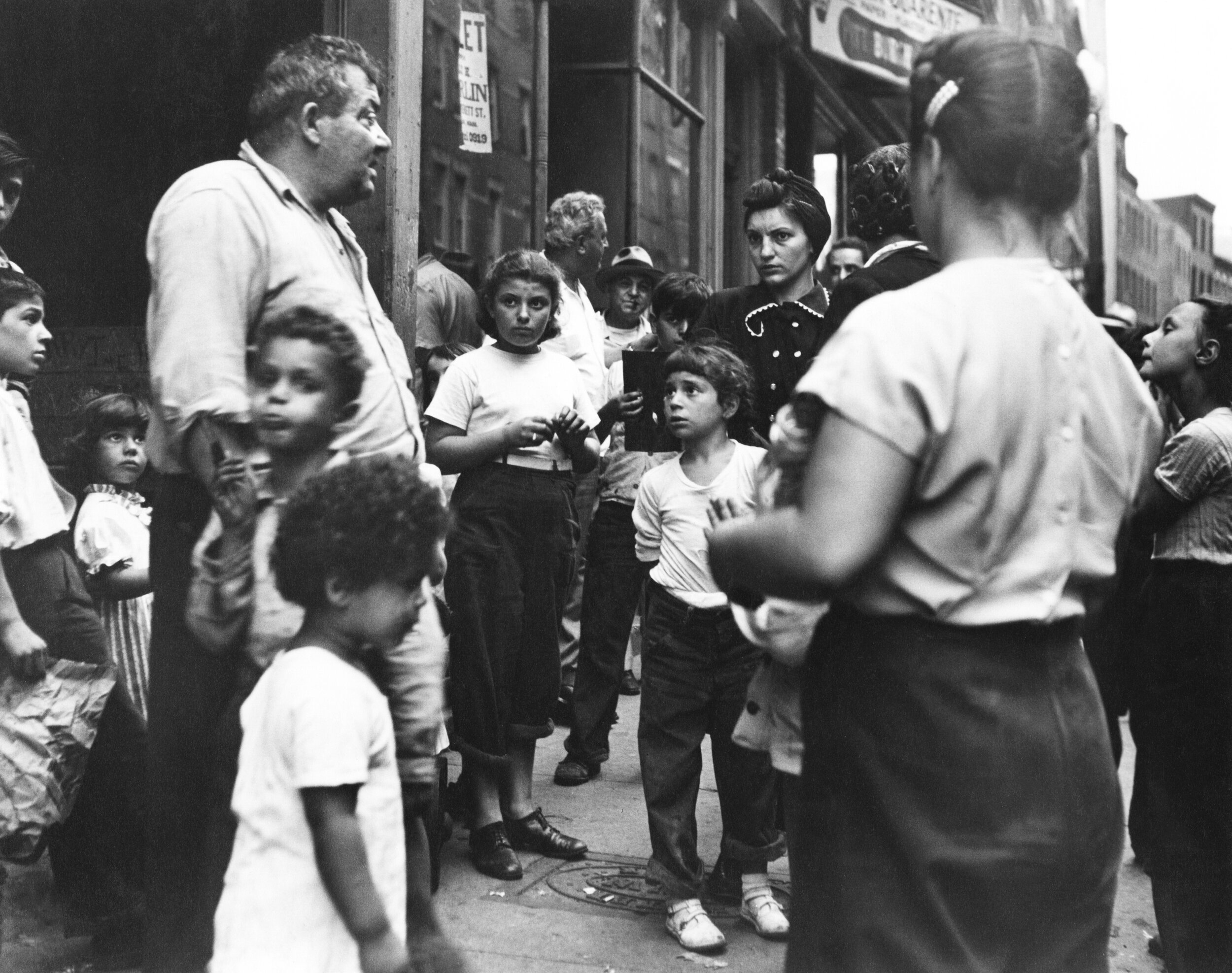
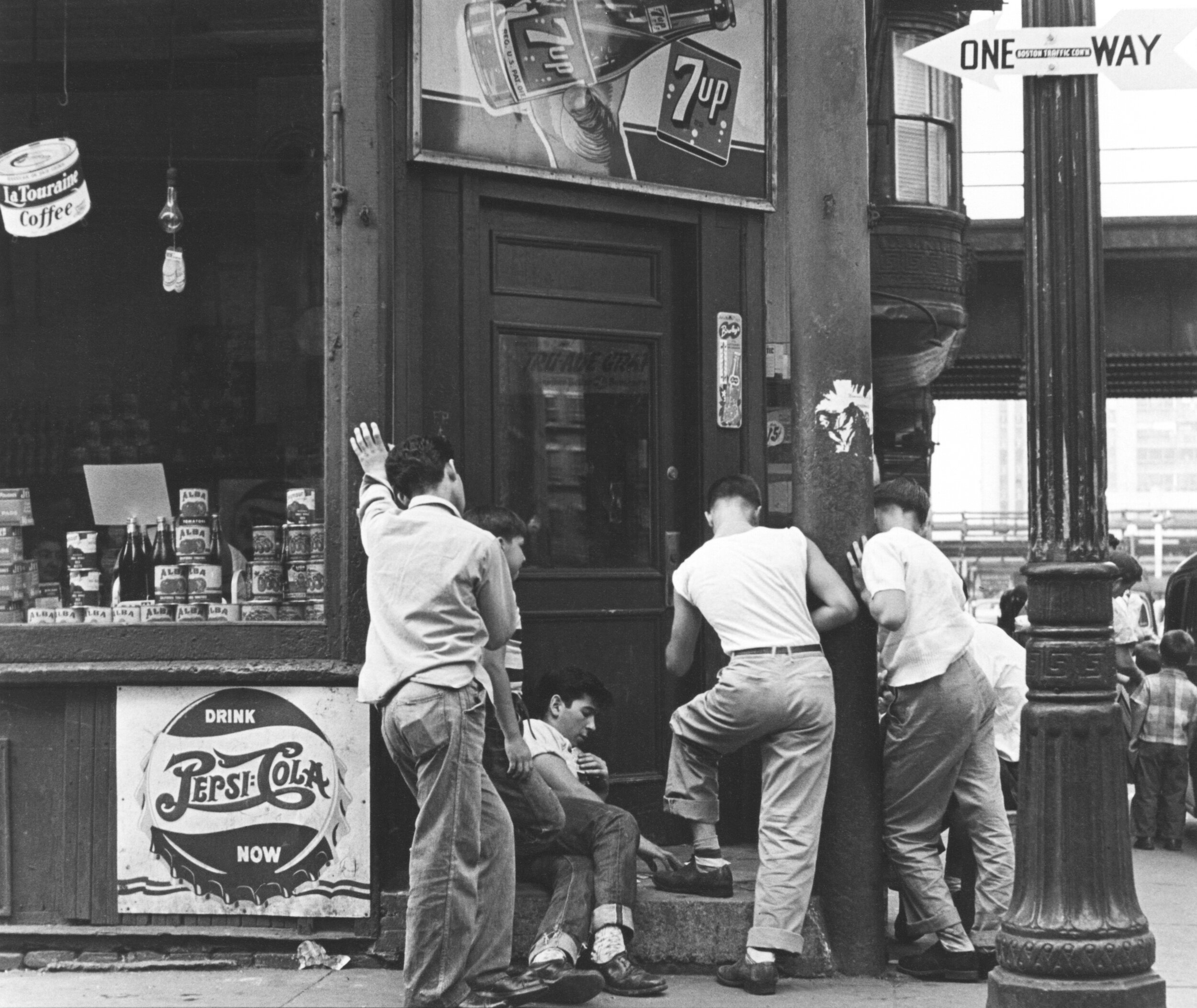
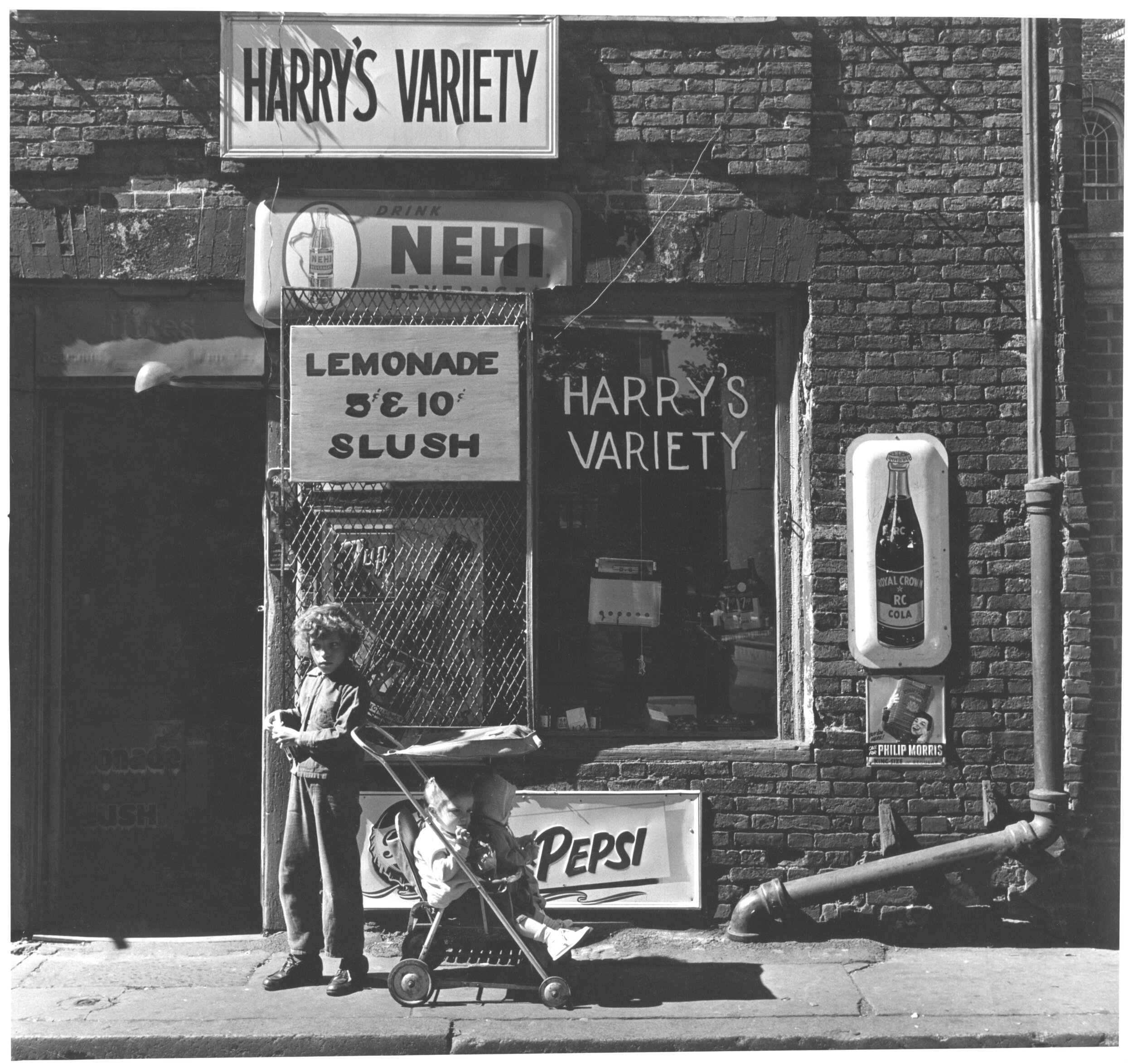
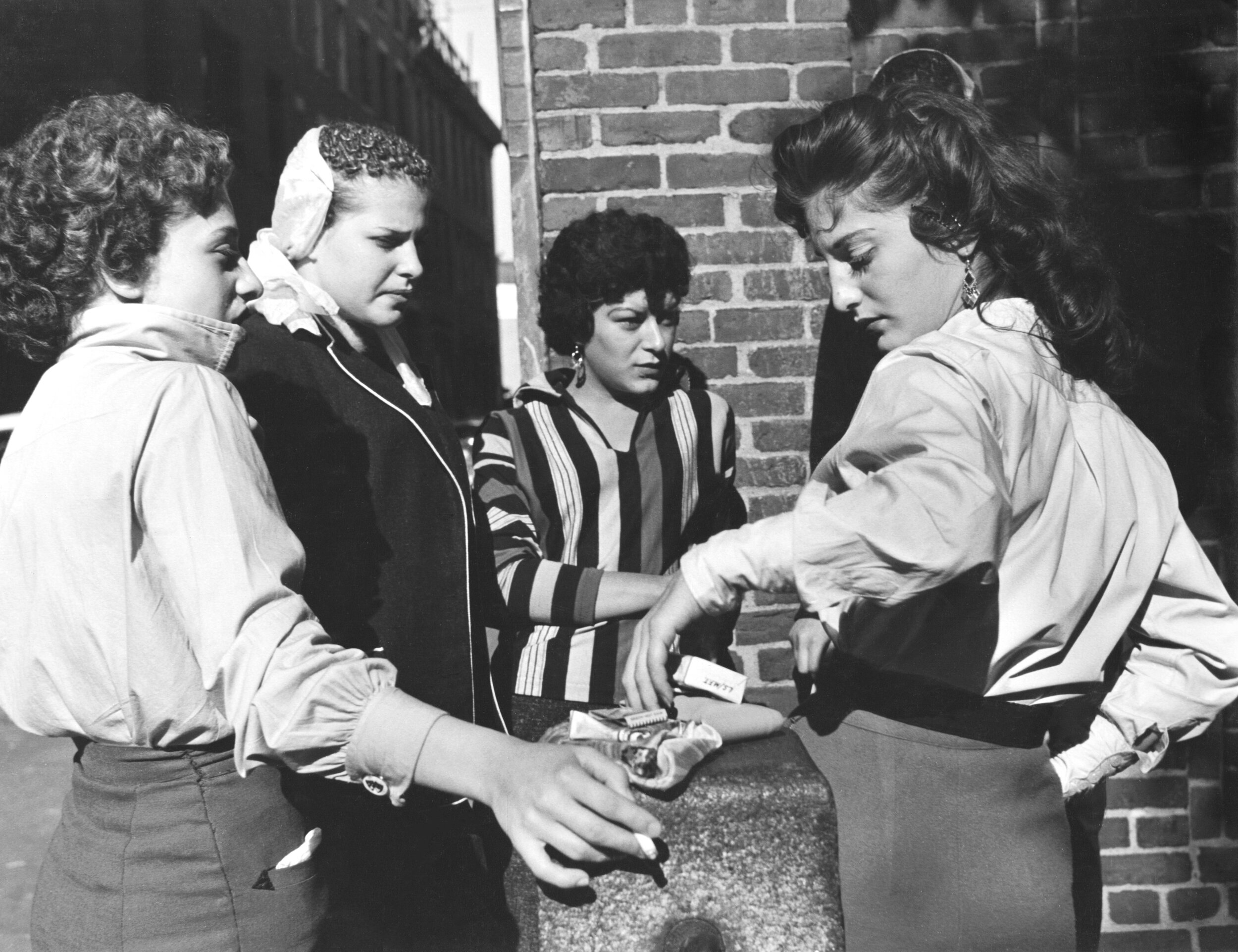
Jules Aarons
West End & North End c. 1947-70
Dr. Jules Aarons’ work as a photographer paralleled his career as an atmospheric physicist. When he moved to Boston in 1947, he became fascinated by the ethnic communities of the West End and North End where he photographed the neighborhoods in depth. Moving with his family to Paris in 1953 to work on his Ph.D., introduced him to the human resonances of street life in urban communities internationally. Throughout his career whenever he travelled for his scientific work, and while at home, he continued to photograph people in their everyday surroundings, at work and play; observing day-to-day life experiences, always respecting and celebrating the dignity of humanity. Aarons’ commitment to his subject was visualized in a sophisticated formal understanding of the context and how that relationship revealed and confirmed deeper meaning.
“I knew that the dynamics of people whose social relationships involved their neighbors and the streets could be a source of creativity”. -Jules Aarons
Aarons’ images were never posed; instead, the richly narrative prints reveal a “moment” in time which lives on after the shutter has closed. He gave us a 30+ year pictorial history beginning after World War II; not only mid-century Boston, but from around the world in such places as France, London, Peru, Japan, Spain, Greece, Mexico, and Portugal.
Aarons began exhibiting his poignant observations of street life during a period when very few art galleries and museums showed photography. From the late 1940s through the 1970s, his photographs appeared in many venues including solo exhibits at the ICA, MIT, The deCordova Museum, The Farnsworth Museum, Gallery of the Cape Art Center, George Eastman House, Library Mistral (Paris), The Underground Gallery (NYC) and regularly at Boston’s Carl Siembab Gallery. In 2003, the deCordova Sculpture Park and Museum hosted a retrospective of Aaron’s work.
In addition to numerous private collections, he has photographs in the collections of the Museum of Modern Art, New York; Bibliotheque National, Paris, France; the Bostonian Society; Bibliotheque Historic de la Vile de Paris; Museum of Fine Arts, Boston; Boston Public Library, Print Department; the RISD Museum, and the deCordova Museum.
The current, West End and North End c. 1947 – 1970 exhibit includes 19 vintage gelatin silver photographs by Aarons which were taken after WWII as urban renewal brought about the destruction of the West End.
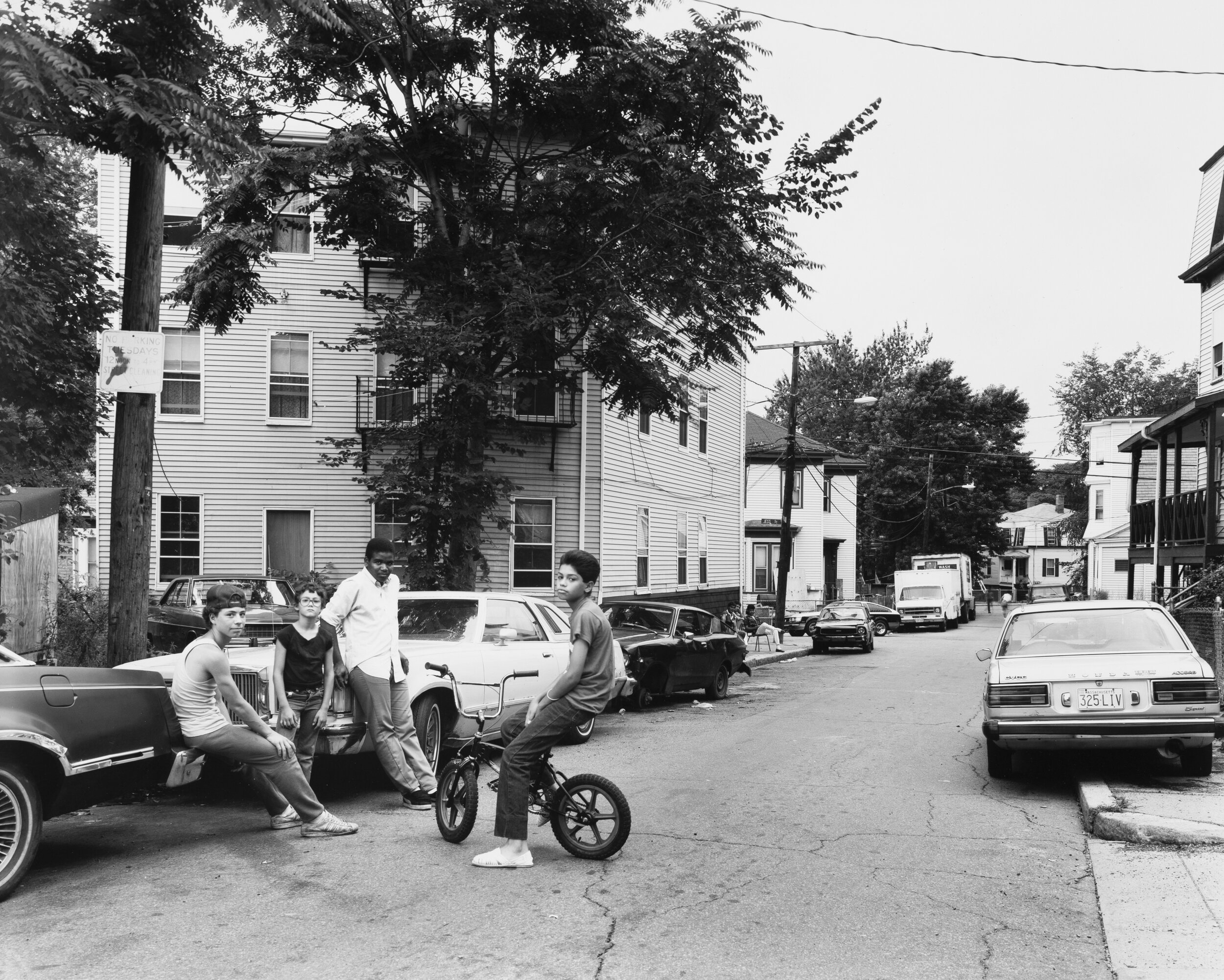
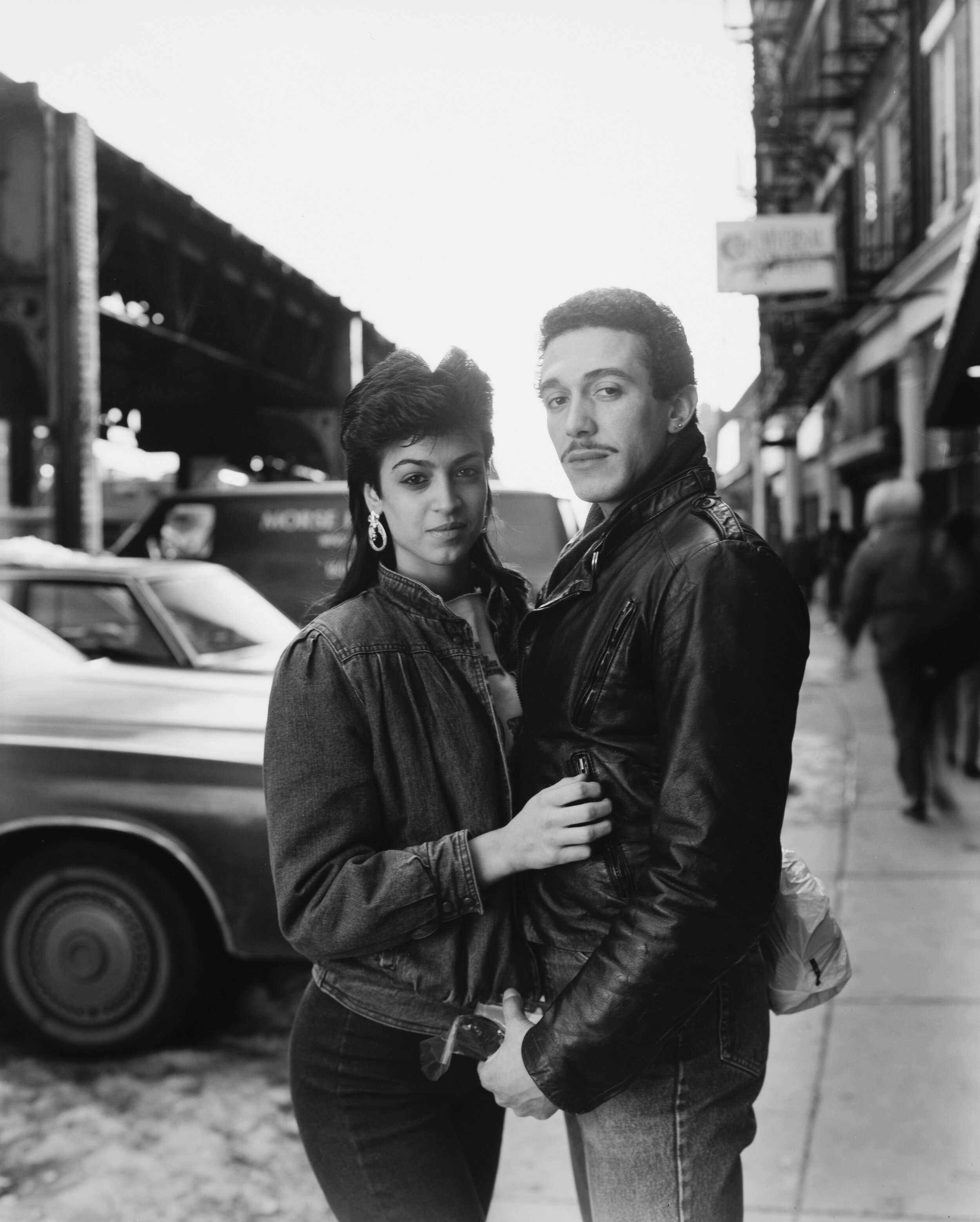
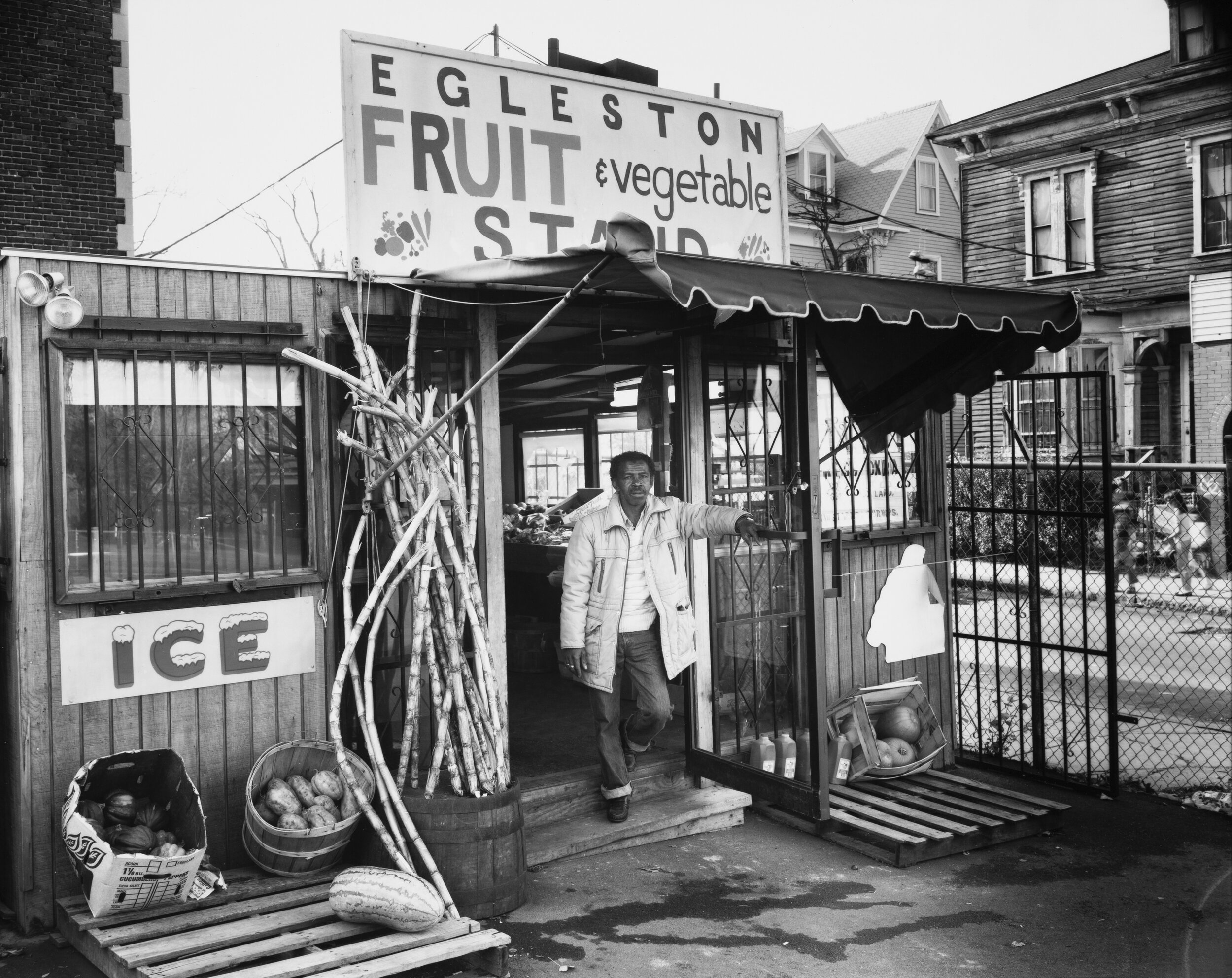
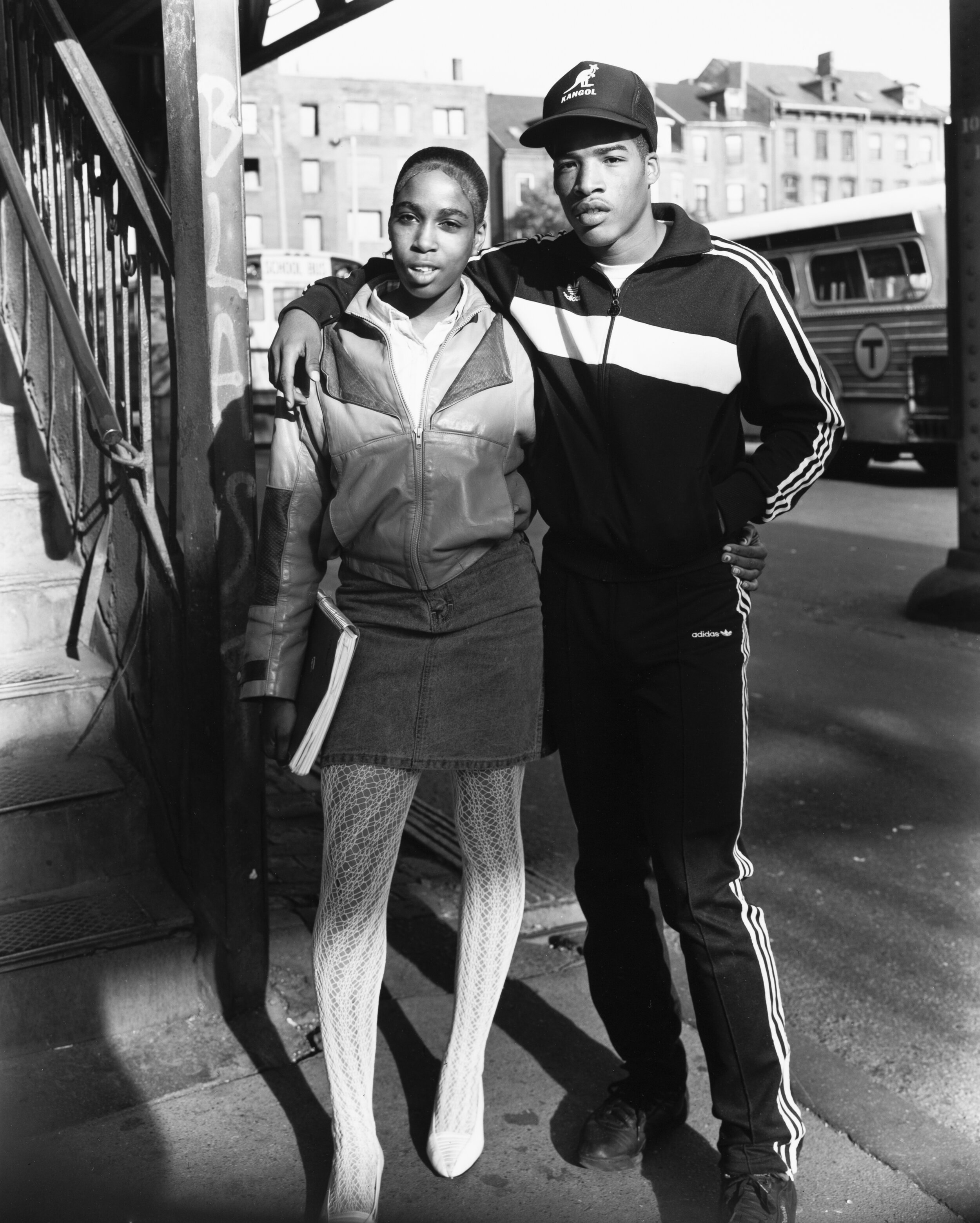
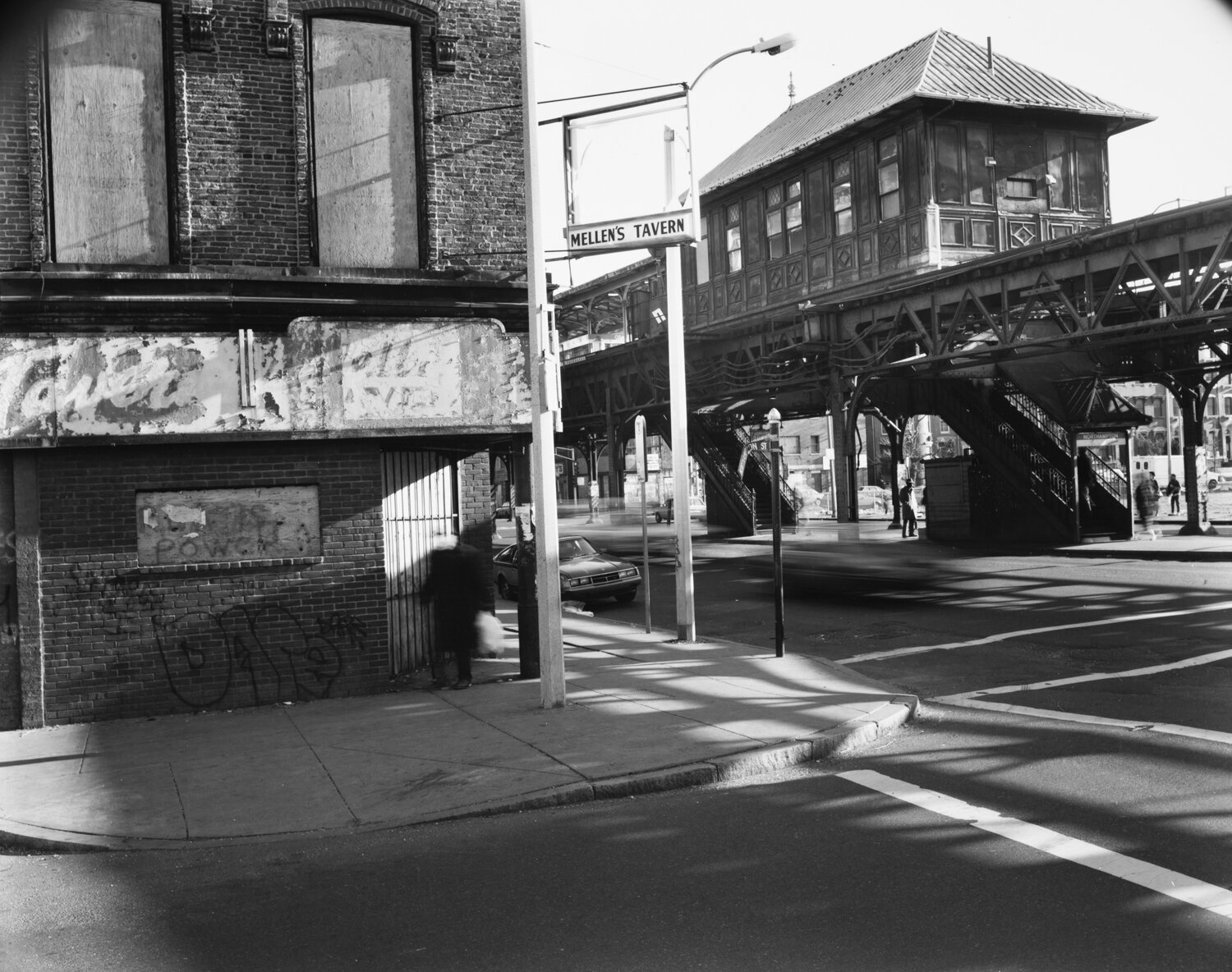
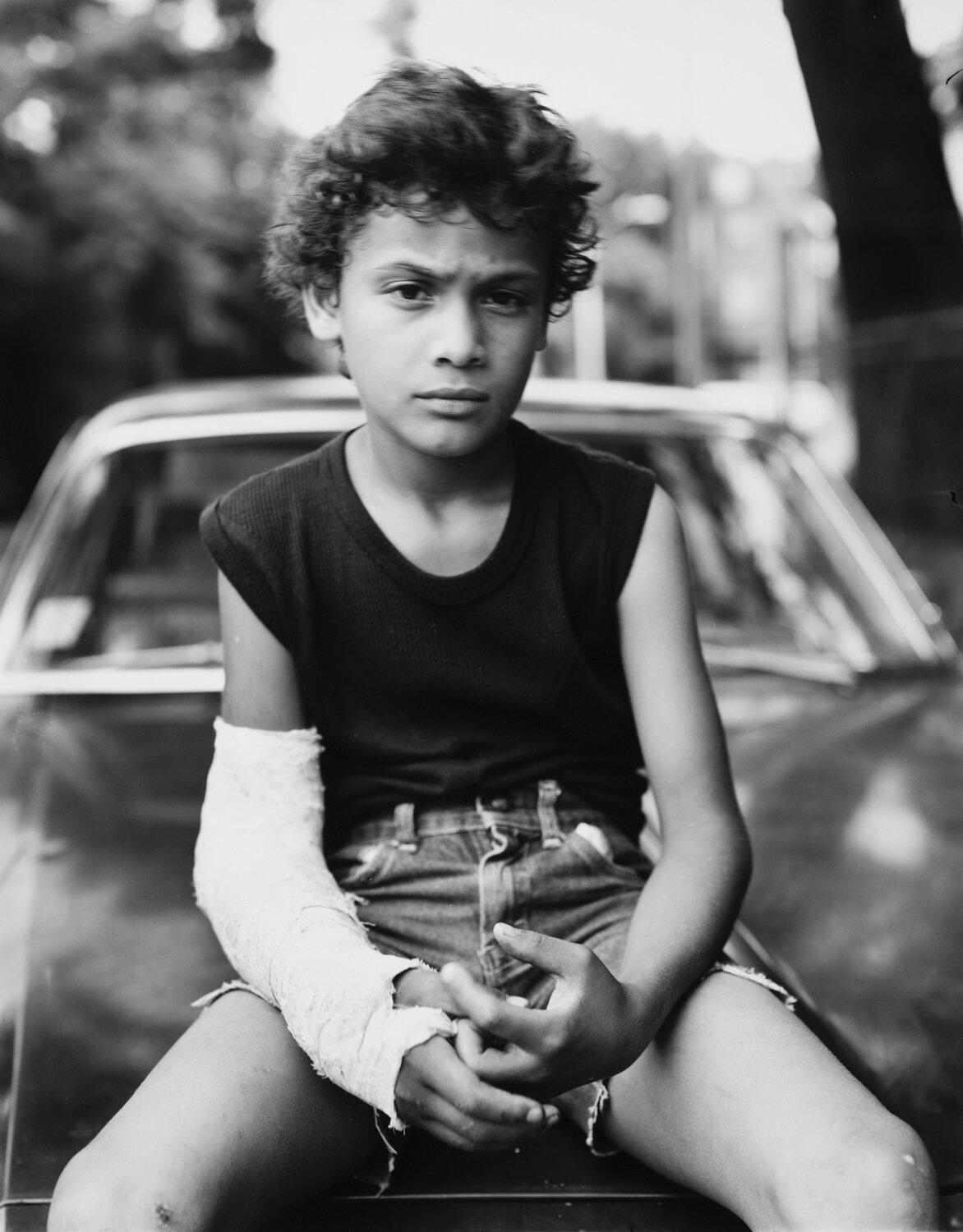
Jack Lueders-Booth
Chinatown to Jamaica Plain
In 1987, Boston’s oldest and busiest elevated train stopped running after 87 years – it had been replaced by a new subway. In 1985, sponsored by the MBTA, the Urbanarts Committee organized a photographic project to document the buildings, streets, and the people of the neighborhoods which were serviced by the elevated and would be the most affected by its removal.
Jack Lueders-Booth photographed in this area for 18 months with his 8x10”camera. He concentrated on the people. Using the 8x10” camera, he was very visible while photographing, often making personal connections with the subjects he chose. As with the images from Women Prisoners, he captures the essence of the individual – straightforward without pretense.
“Visually, the neighborhoods and the architecture along the orange line are very rich. Many things here – store fronts, streets and the elevated railway itself – are virtually unchanged since the turn of the century. My 8x10” view camera dates from around that same period. This large camera attracts a lot of attention and it often brings subjects to me. Most of my photographs are portraits and except where the overall needs of the project might be otherwise, they will continue to be portraits. I think that people are almost always the most interesting part of any place and of any time. Everything that there is to know can be found in their faces, their hands, their postures and their gestures.” -Jack Lueders-Booth
The 8x10” contact prints and 16x20” gelatin silver prints in the exhibit represent the people, families, and small businesses changed by the elimination of this intricate structure and how it was woven into everyday life.
Lueders-Booth’s photographs are included in important collections, including those of The Addison Gallery of American Art, The Art Institute of Chicago; The deCordova Museum and Sculpture Park; The Hood Museum; The Fogg Art Museum; The Library of Congress; The Museum of Modern Art, NYC; The Museum of Modern Art, San Francisco CA; The David Rockefeller Center for Latin American Studies at Harvard University.
